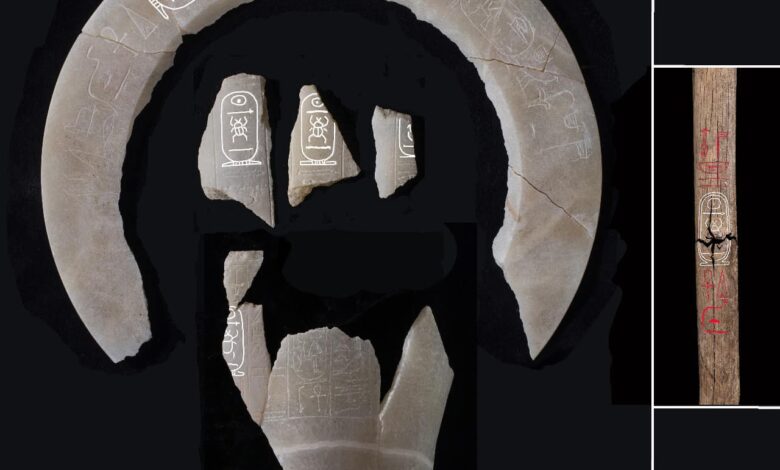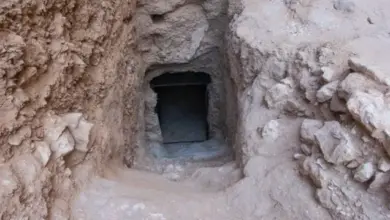
The joint Egyptian-British archaeological mission between the Supreme Council of Antiquities and the New Kingdom Research Foundation discovered the tomb of King Thutmose II, the last lost tomb for royalty of the Eighteenth Dynasty of ancient Egypt.
The discovery about about during excavations and studies of tomb #C4, whose entrance and main passage were found in 2022 in the Wadi C area of Mount Thebes, west of Luxor – located roughly 2.4 kilometers west of the Valley of the Kings.
Evidence found in the tomb has confirmed that it belongs to King Thutmose II, a statement from the Tourism and Antiquities Ministry said on Tuesday.
Minister of Tourism and Antiquities Sherif Fathy said that this tomb is the first royal tomb to be found since the discovery of the tomb of King Tutankhamun in 1922.
The Secretary-General of the Supreme Council of Antiquities, Mohamed Ismail Khaled, explained that when the mission found the entrance to the tomb and its main passage in October 2022, the work team believed that it might be the tomb of the wife of one of the kings, given its proximity to the tomb of the wives of King Thutmose III.
However, with the completion of excavation work during this season, the mission discovered new archaeological evidence that identified the owner of the tomb as none other than King Thutmose II.
Khaled explained that several alabaster vessels found in the tomb had inscriptions bearing the name of King Thutmose II as the “deceased king”, in addition to the name of his main royal wife, Hatshepsut, confirming that this was his tomb.
He called the discovery one of the most important archaeological finds in recent years.
The artifacts discovered in this tomb are important additions to the history of the archaeological area and the reign of King Thutmose II, as the funerary furniture of this king was found for the first time ever.
The head of the Egyptian Antiquities Sector at the Supreme Council of Antiquities and head of the mission from the Egyptian side, Mohamed Abdel-Badie, noted that the tomb was poorly preserved as it was flooded not long after the king’s death.
Initial studies indicate that the main contents of the tomb were moved to another location following the floods.
Abdel-Badie added that mortar found in the tomb features remnants of blue inscriptions,, as well as decorations and paragraphs from the book “Im-Duat”, one of the most important religious texts specific to the tombs of the ancient Egyptian Pharaohs.




